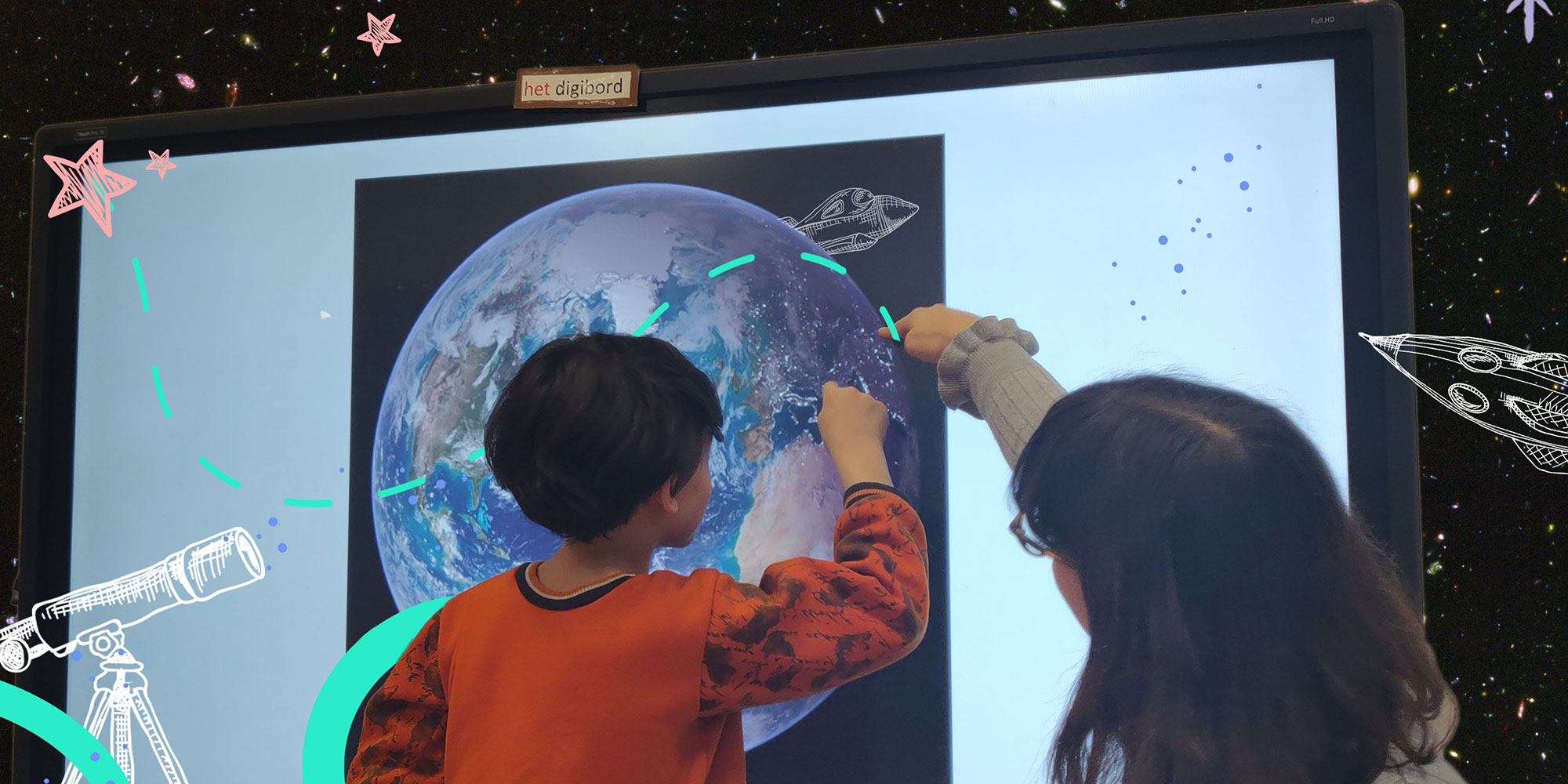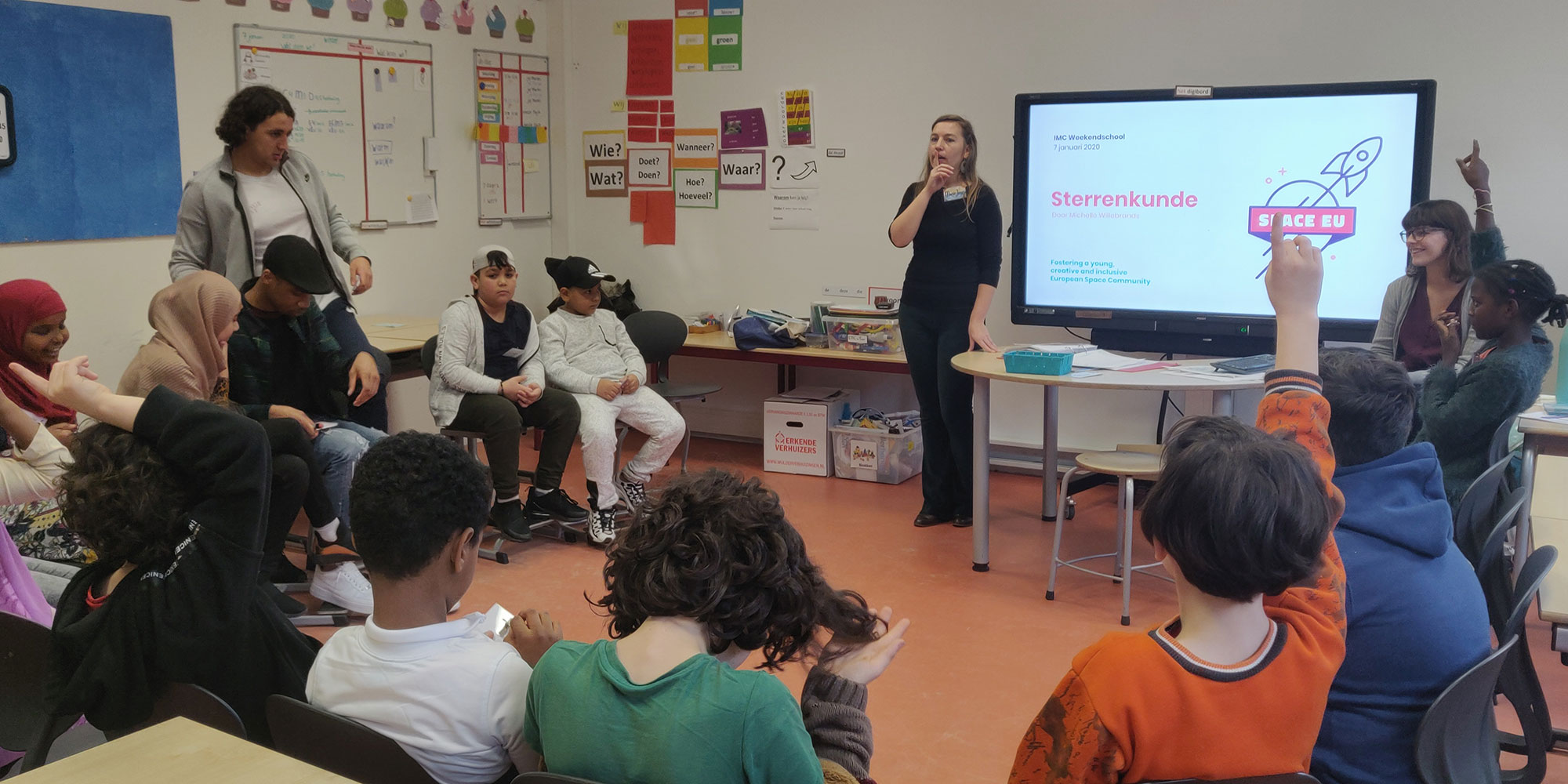Space in Your Living Room! is an online program that brings astronauts, artists, space scientists and engineers, into living rooms across Europe and beyond. It is a series of fun activities, exciting challenges with amazing prizes, and live events for young people, families and educators. At Ars Electronica Festival we will share conversations between astronauts and artists, and the youth art projects created during the program: including stories, speculative design and young reporters stories.
Space in Your Living Room! – Arts and Space Collide brings together astronauts and artists for informal conversations about the overlapping power of arts and space exploration. This program will explore how human endeavors can help us question our place in the universe, our responsibility to Earth and its citizens, and how these topics can inspire children to question and explore. You can meet the following astronauts live: The first Syrian and second Muslim cosmonaut Muhammed Ahmed Fares in conversation with artist Ganzeer, the first Belgium astronaut Dirk Frimout in conversation with Dutch artist AiRich, and the first female French astronaut Claudie Haigneré in conversation with space scientist and musician Katrien Kolenberg. moderated by Ghina M. Halabi and Salma Sylla Mbaye.
Space in your Living Room – by and for youths showcase artworks and youth contribution created during the Space in Your Living Room! program, including speculative design, stories, interactive stories and videos, where children have the chance to interview astronauts and ask all they (and we) ever wanted to know about being in space.
Check out the online exhibition and the YouTube Playlist to find out more.
Biographies
Participating Artist and Scientists
Muhammed Ahmed Fares
Born in Aleppo, Syria, Muhammed Ahmed Fares is the first Syrian and second Muslim cosmonaut to ever go to space. On 22 July 2020, we celebrate exactly 33 years of his space flight. He is credited with carrying the first recorded Earth dirt into space, which was a vial carrying soil from Damascus. Fares was awarded the title Hero of the Soviet Union 30 July 1987; he was also awarded the Order of Lenin. After his spaceflight, Fares returned to the Syrian Air Force and lived in Aleppo. Until he had to flee the country as many other Syrians due to Assad’s regime. Today he lives in Turkey.
Ganzeer
Ganzeer’s artistic practice operates seamlessly between art, design, and storytelling. He has had the opportunity to exhibit his work in a wide variety of art galleries, impromptu spaces, alleyways, and major museums around the world, including the Brooklyn Museum in New York, The Palace of the Arts in Cairo, Greek State Museum in Thessaloniki, the V&A in London, and the Edith Russ Haus in Oldenburg. His interests include social justice, science fiction, and comics. Born in Egypt, he is now based in the United States.
Dirk Frimout
Dirk Frimout is an astrophysicist, astronaut, and the first Belgian citizen to go into space. Dirk became an astronaut candidate in 1977 and joined the European Space Agency in 1978. He acted as a crew coordinator for several European experiments aboard Spacelab, a small reusable space station designed to fit in the Space Shuttle’s cargo bay. He was selected in 1978 for Shuttle flight STS-45 (the ATLAS 1 mission). Fifteen years later, he was the first Belgian in space, on board the Atlantis Shuttle on 24 March 1992. After Dirk carried out his dream of flying and floating in space, he directed several research teams in the fields of telecommunications (Belgacom), speech technology (Flanders Language Valley), and the biotech industry (Tibotec). Dirk Frimout is a Grand Officier de l’Ordre de Léopold and also received the title of Viscount.
AiRich
AiRichAiRich (pronounced as ‘I-Rich’) is a Dutch Visual Artist based in Amsterdam, The Netherlands. AiRich unites the past and future to create her afro futuristic super beings. She uses portrait photography as a medium to tell empowering stories mostly inspired by black mythology and science fiction. The characters in her work are mostly portrayed by models with features and an appearance that does not conform to western beauty standards, emphasizing the importance of rediscovering and redefining the black identity. Her works have been exhibited at the Rembrandthuis Museum, Creating Other Futures Festival and at OSCAM (Open Space Contemporary Art Museum), among others.
Claudie Haigneré
Claudie is the first french woman in space (1996) and the first European woman astronaut selected for an ISS mission (2001). She was born in Le Creusot in 1957, just a few months before Sputnik 1 showed that the bounds of Earth’s gravity could be broken. Claudie graduated as a rheumatologist from Faculté de Médecine and Faculté des Sciences in Paris and completed a doctorate in neurosciences in 1992. In 1985 she was selected as a candidate astronaut by the French space agency, Centre National d’Études Spatiales (CNES). After her selection she conducted research on the effect of space travel on human physiology, specifically the adaptation of cognitive and motor skills in a microgravity environment. Claudie also served in several political positions in France, including minister for research and new technologies, minister for European affairs, and secretary-general for Franco-German cooperation.
Katrien Kolenberg
Katrien Kolenberg’s work lies in the interstices of artistic expression and scientific exploration.
After obtaining her PhD in astrophysics in 2002 at the KU Leuven, she did research at the University of Vienna and at the Harvard-Smithsonian Center for Astrophysics. Currently she is Professor of Astrophysics at the University of Antwerp and the Free University of Brussels, STE(A)M 1 Coordinator at the KU Leuven, and an artist. She uses astronomy as a tool for global development and art as a way to touch upon the human condition, often in a cosmic perspective. Katrien’s work lies in the intersection of artistic expression and scientific exploration.
Ghina M. Halabi
Ghina is an astrophysicist born in a small village tucked among the thousand-year-old cedars of Mount Lebanon. A curious child, a toy’s motor and battery were her objects of fascination. As a school kid, she installed a light system in her dark blue bag to make it easier to find her books. She found physics challenging so it lured her into it as a major in college, and later as a Masters degree. She then did her PhD in Astrophysics, during which she studied the structure and evolution of stars. She is a public speaker at international conferences and global forums including TEDx, and the UN. She was featured as “Modern Muse for Astronomy” by the cultural magazine Postscript.
Salma Sylla Mbaye
In 2017, Salma Sylla Mbaye became the first astronomy PhD student in Senegal. She has been fascinated by stars and space ever since secondary school, but she had never really thought about pursuing a PhD because she didn’t know anyone who had even tried. Always a trailblazer, Salma wants to help develop a network of local and international astronomers who can share information and training, and create skills to nurture organization and more collaboration with other African countries or international partners.





